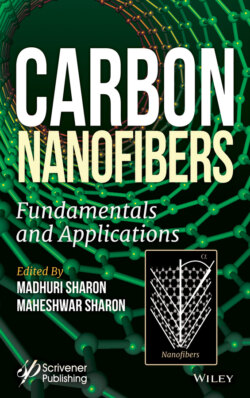Читать книгу Carbon Nanofibers - Группа авторов - Страница 22
1.1.4.1 Carbon Fibers from PAN
ОглавлениеBefore carbon fibers are made from PAN, some pretreatments are made, like mixing Acrylonitrile powder with a suitable plastic (e.g., methyl acrylate, methyl methacrylate) and a catalyst to form a polyacrylonitrile plastic. This plastic is then spun to form the internal atomic structure of the fiber. These fibers are stabilized by heating them in air at about 200–300 °C for about 30–120 minutes. During this process some oxidation of carbon takes place, which helps to rearrange their atomic bonding pattern. These fibers are then carbonized at temperature 1000–3000 °C for several minutes in gas like argon (but in absence of any oxygen). By this process most of the non-carbon atoms and a few carbon atoms as well are lost in the form of gas like CO2, CO, N2 NH3, water vapor H2, etc. This process helps to form strongly bonded carbon atoms that are aligned parallel to the long axis of the fiber. Due to losing different types of material during the carbonizing process, the surface of the fiber is very rough. Hence, to obtain better bonding properties, surfaces are oxidized in a controlled manner by techniques like exposing them in oxygen environments or by performing some chemical treatments like dipping them into some oxidizing solutions like nitric acid. In order to protect the fibers from environmental oxidation, they are coated with epoxy, polyester, nylon, urethane, and others.
